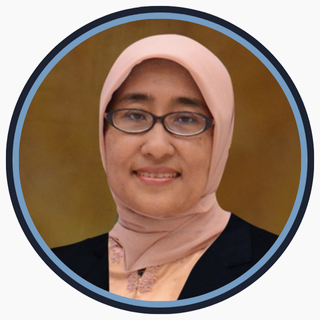The Risk Effect of Primary Dysmenorrhea on Women of Childbearing Age in Ploso Subdistrict of Tambaksari Surabaya
Downloads
Primary dysmenorrhea is menstrual pain without apparent abnormality in the genital device and can be a sign of reproductive system disorders. The prevalence of primary dysmenorrhea is quite high but received less attention from the medical world. This study aims to analyze the risk factors for primary dysmenorrhea in Ploso Village, Tambaksari Sub-District, Surabaya City. This research is an observational analytic study with a cross-sectional design. Sampling is done by multistage cluster sampling. Respondents were 80 women of childbearing age-aged 15-35 years. The results showed that the prevalence of primary dysmenorrhea was 71.3%. Most of the impact of primary dysmenorrhea felt by respondents is a decrease in productivity by 77.2%. Respondents mostly never examined their pain or complaints related to primary dysmenorrhea to doctors or midwives (84.2%) on the grounds the majority of respondents considered the symptoms of primary dysmenorrhea felt to be natural (54.2%). The highest proportion of respondent characteristics was 15-25 years old (51.3%), had a family history (52.5%), had given birth (60%), had menstrual periods of 3-7 days (86%), menarche age 12-13 years (53.8%), had no exercise habits (53.8%), had normal nutritional status (38.8%), and experienced severe stress (25%). The results of the bivariate analysis showed that there was a relationship between age (0,002) and family history with primary dysmenorrhea (p=0,006), and there was no relationship between birth experience, menstrual length, age of menarche, exercise habits, nutritional status, and stress states with primary dysmenorrhea. Women aged 15-25 years old or who have a family history of primary dysmenorrhea are at risk of experiencing primary dysmenorrhea.
Andira, Dita. 2013. Seluk Beluk Kesehatan Reproduksi Wanita. Jogjakarta: A Plus Books
Andriani, Ayu Kusuma. 2011. Hubungan Riwayat Keluarga dan Keadaan Stres Dengan Terjadinya Dismenore Pada Mahasiswi FKM Unair. Skripsi. Surabaya; Universitas Airlangga
Anurogo, Dito dan Wulandari, Ari. 2011. Cara Jitu Mengatasi Nyeri Haid. Yogyakarta: CV ANDI OFFSET (Penerbit ANDI)
Arsyad, H., Organ Reproduksi Wanita. http:// hadijaharsyad.blogspot.com/2011/11/organ reproduksi-wanita.html (sitasi 28 Juni 2014).
Blakey H., Chisholm C., Dear F., Harris B., Hartwell R., Daley A.J., dan Jolly K., 2010. Is exercise associated with primary British Journal of Obstetrics & Gynaecology), 117:222-4
Branco C.C., Reina F., Montivero A.D., Colodron M., dan Vanrell J.A., 2006. Influence of high intensity training and of dietetic and anthropometric factors on menstrualcycle disorders in ballet dancers. Gynecol Endocrinol, 22(1): 31- 35
Chang, Esther; Daly, John; dan Elliott, Doug. 2010. Patofisiologi Aplikasi Pada Praktik Keperawatan. Jakarta: Penerbit Buku Kedokteran EGC
Choirul, Ilham/Inilah Pengaruh Stres Bagi Tubuh Anda. http://sidomi.com/76238/inilah- pengaruh-stres-bagi-tubuh-anda/(sitasi tanggal 29 September 2014)
French, Linda. 2005. Dysmenorrhea American Family Phisician. Volume 71/No. 2 (Januari 2005). Lancester General Hospital.
Harmono. 2012. Hubungan Antara Kebiasaan Olahraga, Menarche, dan Lama Menstruasi Dengan Kejadian Dismenore Pada Remaja di SMA Muhammadiyah 1 Purbalingga Tahun 2012. Skripsi. Purwokerto; Universitas Muhammadiyah Purwokerto
Harry. Mekanisme endorphin dalam tubuh. http:// klikharry.files.wordpress.com/2007/02/1. doc+endorphin+dalam+tubuh. (sitasi tanggal 9 Juni 2014)
Hellmann J, Zhang, M.J., Tang Y., Rane M., Bhatnagar A., dan Spite M., 2013. Increased saturated fatty acids in obesity alter resolution of inflammation in part by stimulating prostaglandin production. Journal Of Immunology. American Association of Immunologists Country of Publication
Hendrik. 2006. Problema Haid. Jakarta: Tiga Serangkai
Melissa, Stopler/Painful Periods Related to Stress. http://www.medicinenet.com/script/main/art. asp?articlekey=46253 (sitasi 19 Juli 2014)
NS, Sallika. 2010. Serba Serbi Kesehatan Perempuan. Jakarta: Bukune
Prastiwi, Indah. 2007. Hubungan Beberapa Faktor Remaja Putri Kelas II dan III dengan Kejadian Dismenore Primer di SMPN 30 Semarang Bulan Maret-Mei Tahun 2007. Skripsi. Semarang; Universitas Diponegoro
Pudiastuti, Ratna Dewi. 2012. 3 Fase Penting pada Wanita. Jakarta: PT Elex Media Komputino Raihan, U., Kenali Perubahan Pada Masa Nifas. http://roihan.wordpress.com/2009/02/13/ kendysmenorrhea in young women?.BJOG ali-perubahan-pada-masa-nifas/(sitasi 27 Juni 2014).
Reeder, Martin, dan Koniak-Griffin. 2011. Keperawatan Maternitas Kesehatan Wanita, Bayi, dan Keluarga Edisi 18 Volume I. Jakarta: Penerbit Buku Kedokteran EGC
Smeltzer Suzanne, dan Bare Brenda. 2001. Buku Ajar Keperawatan Medikal BedahBrunner dan Suddarth Edisi 8 Vol 2. Jakarta: EGC
Suliawati, Gidul. 2013. Hubungan Umur, Paritas dan Status Gizi dengan Kejadian Dismenore pada Wanita Usia Subur di Gampong Klieng Cot Aron Kecamatan Baitussalam Aceh Besar Tahun 2013. Skripsi. Banda Aceh; Sekolah Tinggi Ilmu Kesehatan U'budiyah
UN POPIN/Guidelines on Reproductive Health/http://www.un.org/popin/unfpa/taskforce/gu ide/ iatfreph.gdl.html (sitasi 21 Agustus 2014)
Utami, A.N.R., 2012. Faktor yang Berhubungan Dengan Kejadian Dismenorea Pada Remaja Putri di SMAN 1 Kahu Kabupaten Bone. Skripsi. Makassar; Univeritas Hasanuddin
Volat, Fanny E; Pointud, Jean-Christophe; Pastel, Emilie; Morio, Béatrice; Sion, Benoit; et al. 2012. Depressed Levels of ProstaglandinF^sub 2[alpha]^ in Mice Lacking Akr1b7Increase Basal Adiposity and Predispose to Diet-Induced Obesity. Diabetes. American Diabetes Association
Wirawan, I Made Cock/Dismenore (Nyeri Haid) http:// www.blogdokter.net/2007/03/09/dismenore-nyeri-haid/(sitasi 20 Juni 2014)
- Every manuscript submitted to must observe the policy and terms set by the Jurnal Berkala Epidemiologi
- Publication rights to manuscript content published by the Jurnal Berkala Epidemiologi is owned by the journal with the consent and approval of the author(s) concerned. (download copyright agreement)
- Complete texts of electronically published manuscripts can be accessed free of charge if used for educational and research purposes according to copyright regulations.

JBE by Universitas Airlangga is licensed under a Creative Commons Attribution-ShareAlike 4.0 International License.























